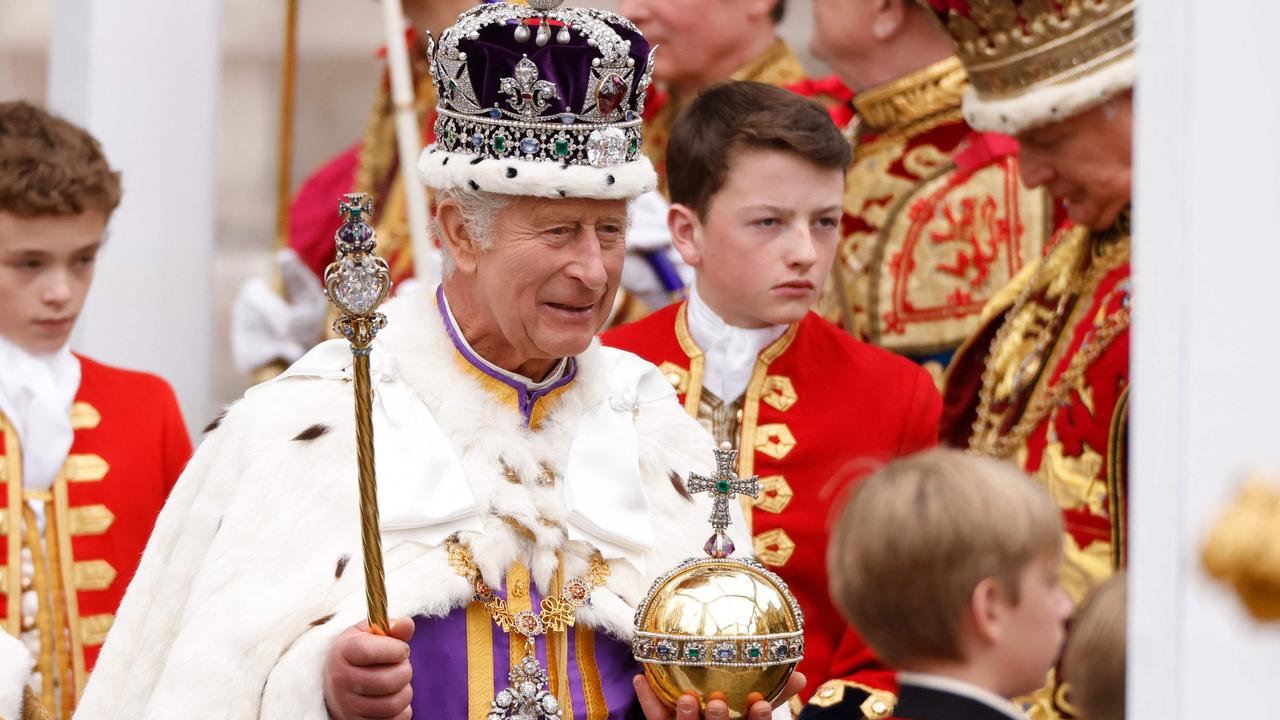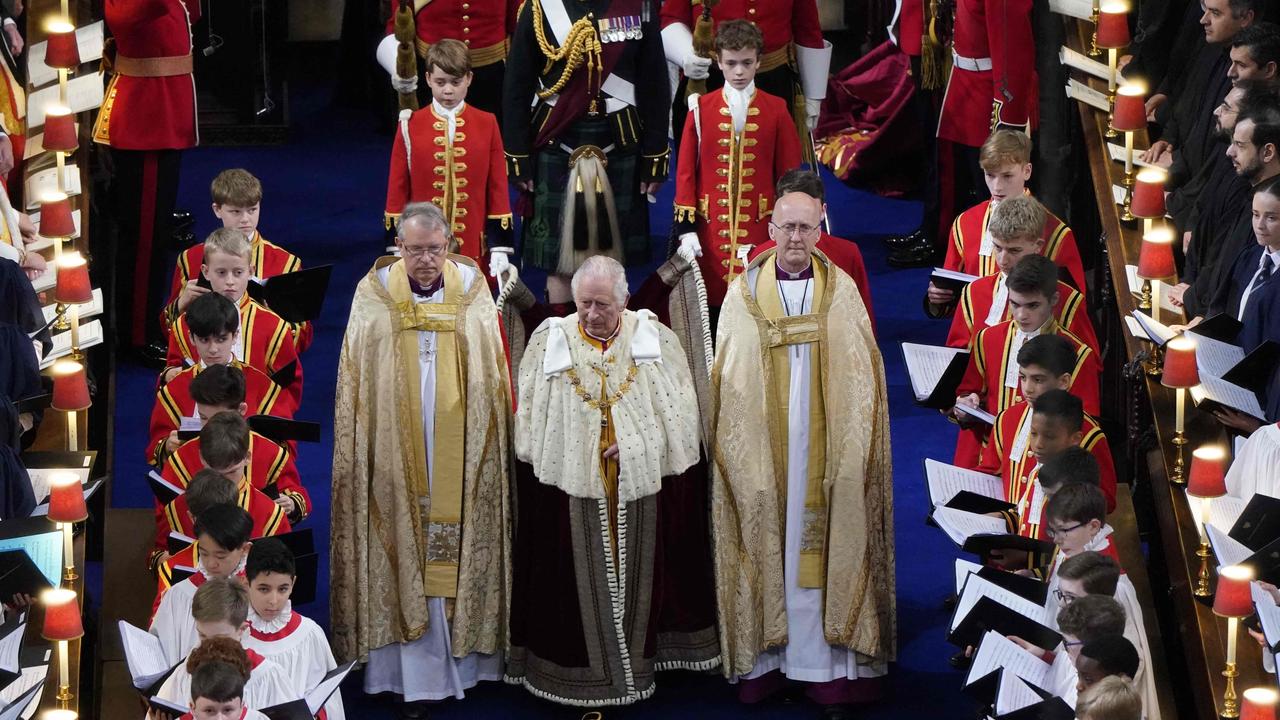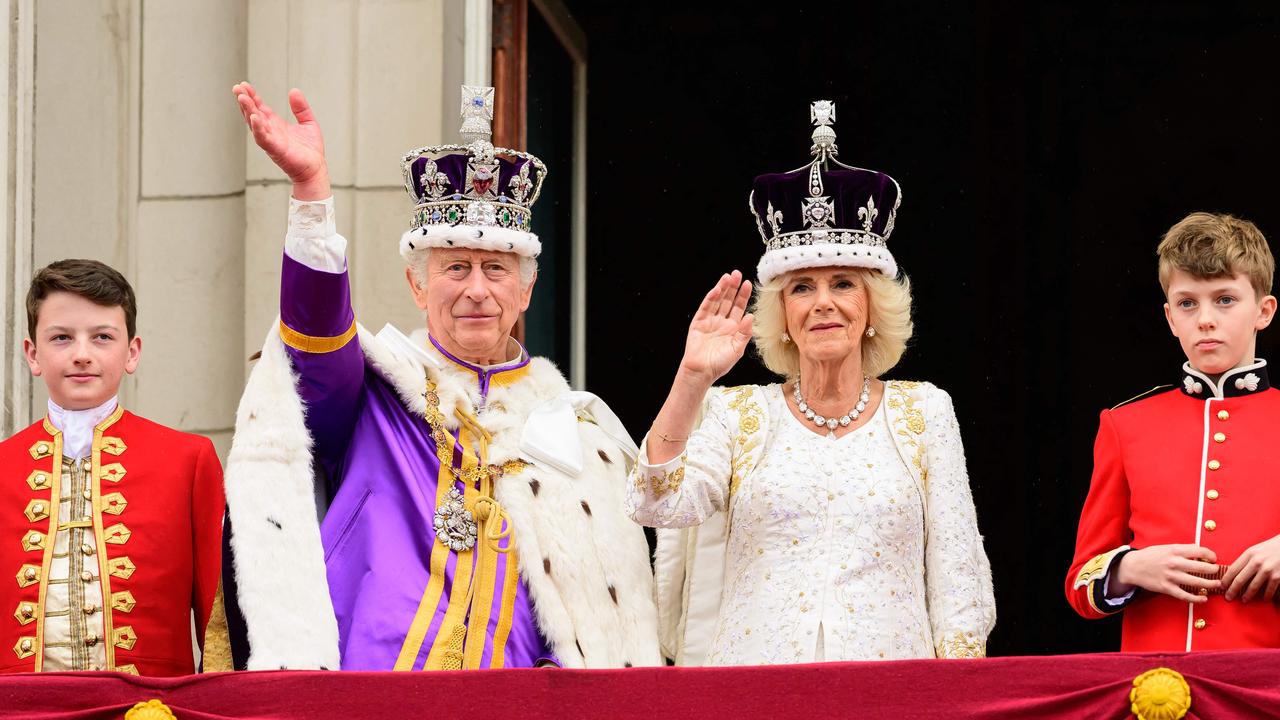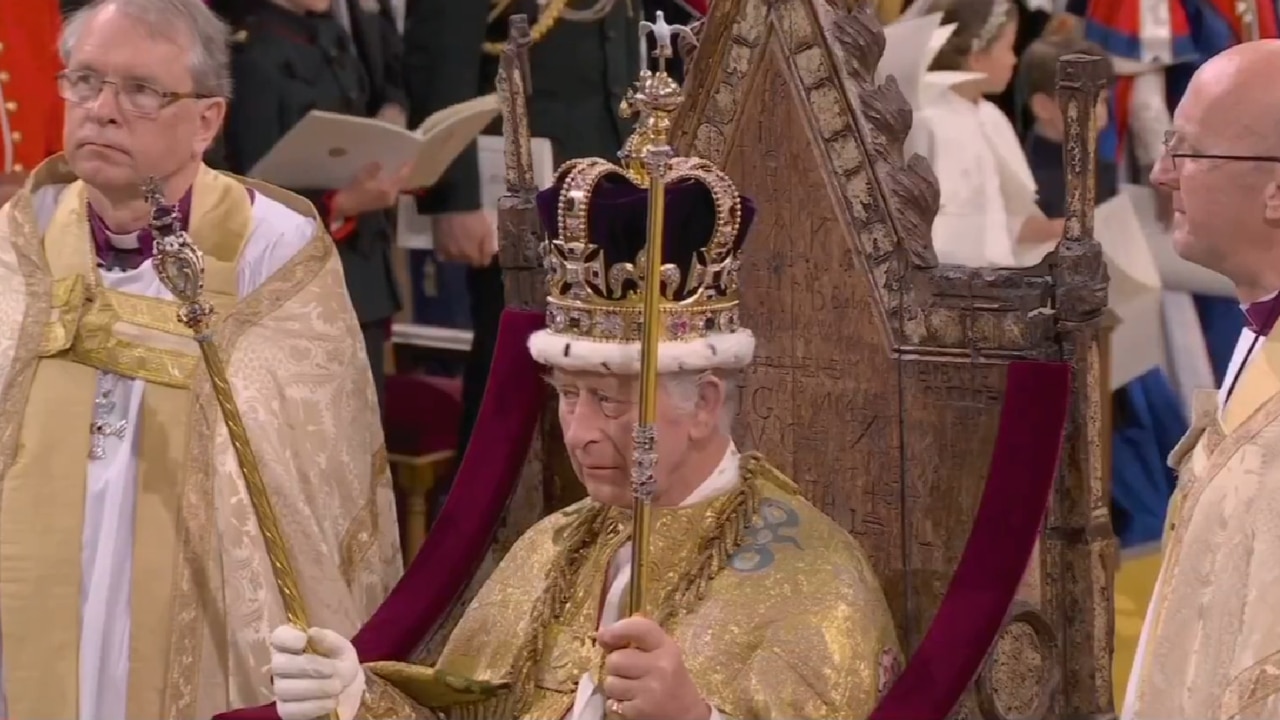King Charles III crowned at Coronation at Westminster Abbey
King Charles III has been officially crowned in a ceremony full of pomp and pageantry in London

READING LEVEL: GREEN
Britain and Australia have a new King after the Coronation* of Charles III at the weekend.
As an estimated 300 million people watched on TV, and thousands more along the streets of London, Charles was officially crowned along with his wife, Queen Camilla, at Westminster Abbey.
The religious ceremony marked the passing of royal powers to King Charles after the death of his mother, Queen Elizabeth II, in September last year.
The ceremony included a number of changes. Female bishops and choristers participated for the first time, as did leaders of Britain’s non-Christian faiths, while its Celtic languages – Welsh, Scottish Gaelic and Irish Gaelic – featured prominently.

The event included traditions* dating back thousands of years and was attended by a list of prominent and outstanding individuals from around the world. Guests ranged from scientists to singers and world leaders in attendance included Australian Prime Minister Anthony Albanese and US President Joe Biden. Matildas captain Sam Kerr was the Australian flag-bearer at the Coronation, which was broken into five parts:
1. Recognition and Oath: Guests were asked if they recognised the new monarch and responded with “God Save King Charles”. Charles then signed an oath* promising to rule according to the law and with mercy* before sitting in the Coronation Chair, which housed the Stone of Destiny (see Extra Reading section for more about this).

2. Anointing: This part of the ceremony was behind screens and not shown to the public. The Archbishop of Canterbury poured holy oil from the gold eagle-shaped Ampulla into the ancient Coronation Spoon before dipping two fingers into the oil and touching Charles on the hands, chest and head. The act signifies God is now protecting the King.
3. Investiture and Crowning: Charles was dressed in a spectacular* gold robe and presented with items from the Crown Jewels including gold spurs*, a sword, gold bracelets, a gold orb*, as well as a ring and two sceptres*. St Edward’s Crown was then placed on his head before Charles changed into a purple velvet robe and the lighter Imperial State Crown.

4. Homage: As Charles sat on the throne, senior UK officials showed their respect to the new King by placing their hands on his knees, promising to be loyal, touching the crown and kissing the monarch’s right hand.

5. Procession: The new King and Queen Camilla, who was also officially crowned, rode back to Buckingham Palace in a gold carriage pulled by horses through the streets of London.

Earlier, the royals were taken to Westminster Abbey in a carriage built by Australian Jim Frecklington in Sydney and includes historical items including pieces of Henry VIII’s warship, the Mary Rose, fragments from Sir Issac Newton’s apple tree and timber from the Tower of London.
After returning from the Abbey, King Charles and Queen Camilla appeared on the Palace balcony with members of the royal family to greet the people.

ROLE OF THE KING
King Charles’ role is quite different from those of historical kings and queens who ruled the land. Today’s King is known for devoting his life to serving the people. The King and Royal Family are expected to support the people in times of mourning* or crisis*, attend events and special occasions and reward the achievements of everyday people who help their communities through the King’s Honours awards.
Charles pledged, “I come not to be served but to serve” during the Anglican service.

WHY DOES IT MATTER IN AUSTRALIA?
Australia is a constitutional monarchy, which means Charles III is our Head of State* but does not rule over the day-to-day running of our nation. On the advice of the Prime Minister, the King appoints the Governor-General, who is the King’s representative in Australia. The Governor-General can formally approve laws passed by the parliament* and start the process for a federal election*, but in reality the Prime Minister is controlling these moves.
Some Australians want our country to become a republic, which means we would lose the King as our Head of State and appoint an Australian to this role (similar to the President in the US). However, this change requires a referendum* allowing all Australians to vote on whether they want the change. No referendum has currently been planned.
Additional reporting by staff writers.
GLOSSARY
- Coronation: the ceremony to crown a new king or queen
- traditions: something that has been done by a family or society for a long time
- oath: a promise
- mercy: forgiving or helping someone instead of punishing them
- spectacular: marvellous
- spurs: metal pieces with a spike that is attached to the heel of a rider’s boot
- orb: sphere
- sceptres: batons
- mourning: time of feeling sad after a death
- crisis: time of great difficulty or an emergency
- Head of State: leader
- Parliament: group of elected people that make laws
- federal election: a vote to choose national members of parliament
- referendum: a question where eligible people must vote ‘yes’ or ‘no’
EXTRA READING
Stone of Destiny arrives for King’s Coronation
Party time to mark Queen’s historic reign
King Charles dumped from our $5 note
QUICK QUIZ
- Who anointed King Charles?
- Name some of the Royal Jewels used in the ceremony.
- Which Australian built a gold carriage used in the procession?
- What is the name of the first crown placed on Charles’ head during the Coronation?
- Who represents the King in Australia?
LISTEN TO THIS STORY
CLASSROOM ACTIVITIES
1. Dear diary, love Charlie
Do you think someone as important as the King keeps a journal? Let’s imagine he does. What do you think he would write about the special day of his Coronation?
Write a journal entry from King Charles III’s point of view about his Coronation. Think about which parts he would think most important to reflect upon, how he might have felt throughout the proceedings and the tone that he would use in his writing.
When your entry is complete, try reading it aloud in your most royal-sounding voice.
Time: allow 30 minutes to complete this activity
Curriculum Links: English
2. Extension
Write another journal entry, from the point of view of a different person or animal that was somehow involved in the ceremony. This journal entry can be less serious. Perhaps you are writing as a horse who has to pull the very heavy carriage with the King aboard, or a bored child dragged along with their grandmother to watch the procession – use your imagination!
Time: allow 30 minutes to complete this activity
Curriculum Links: English
VCOP ACTIVITY
King versus president
The article outlines what a king means for Australia, compared to if we were a republic and had a president instead.
Do you think Australia would change much if we had a president instead of a King? Why do you think that way? Do you think it would be a good change or a negative one?
Extension: In control for a day
Write a persuasive letter to the Australian Government convincing it to let you take control of the decision making in Australia for a day. Explain why it would be a good/bad decision. What changes would you make and why?
Use your VCOP skills to enhance the piece.

